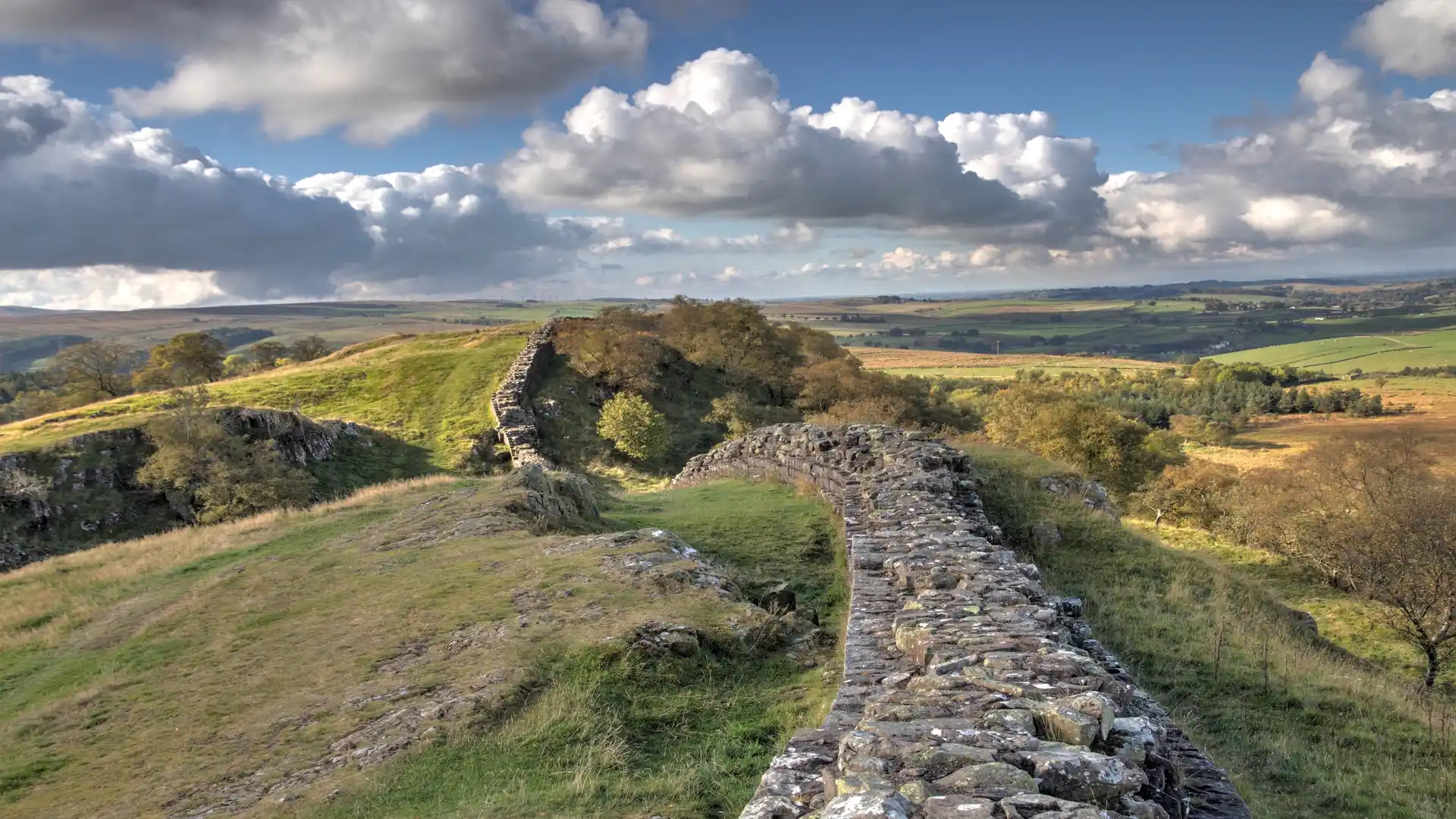

Hadrian’s Wall is one of Britain’s most remarkable places to walk — a UNESCO World Heritage Site running across northern England through rolling hills, open moorland, sweeping escarpments, and beautifully preserved Roman archaeology. Built nearly 2,000 years ago as the north-western frontier of the Roman Empire, the Wall now forms the backbone of one of the UK’s finest long-distance routes: the Hadrian’s Wall Path National Trail, stretching from Wallsend in the east to Bowness-on-Solway in the west.
For walking holidays and outdoor adventures, Hadrian’s Wall offers an unforgettable blend of history and dramatic scenery. From the rugged crags of Northumberland National Park to the gentler farmland of Cumbria, the route reveals milecastles, forts, vallums, and sweeping viewpoints. Whether you’re following the full National Trail or exploring shorter circular walks from key sites, this is one of the most rewarding self-guided walking destinations in the UK.
Constructed under Emperor Hadrian in AD 122, the Wall marked the northern limit of Roman Britannia. Stretching for around 73 miles (80 Roman miles), it was protected by milecastles, turrets, and major forts including Housesteads, Vindolanda, Chesters, and Birdoswald. Much of the Wall survives today, particularly in the central upland section, where dramatic ridgelines and open landscapes create some of the most atmospheric walking anywhere in Britain.
The central stretch between Steel Rigg, Crag Lough, and Housesteads is the most iconic, with cliff-edge paths and vast views across Northumberland. The eastern and western ends offer calmer farmland, river valleys, and accessible routes for gentler walking.
The full coast-to-coast route from Wallsend to Bowness-on-Solway, offering varied landscapes and superb heritage.
A short but spectacular walk along the Whin Sill escarpment, known for its dramatic views and iconic ridge walking.
A rewarding loop around Britain’s best-preserved Roman fort, with panoramic outlooks over open countryside.
A quieter walk combining archaeology, woodland trails, and ridgeline sections above the lake.
A scenic half-day route through farmland, river valleys, and multiple Roman features.
Housesteads Roman Fort – Britain’s most complete Roman fort with spectacular views.
Vindolanda – A remarkable archaeological site with an excellent museum.
Chesters Roman Fort – Peaceful riverside setting with well-preserved remains.
Birdoswald – Dramatic ruins overlooking open countryside.
Steel Rigg – One of the most iconic viewpoints along the Wall.
Crag Lough – A beautiful lake beneath rugged cliffs.
Hexham – A charming market town with an abbey and riverside walks.
Carlisle – Western gateway to the Wall with castle, museums, and city trails.
Yes — it’s one of Britain’s best destinations for long-distance and short walking routes.
The National Trail is 84 miles (135 km) and typically takes 5–7 days to complete.
The central ridge between Steel Rigg, Crag Lough, and Housesteads is the most scenic and dramatic.
Yes — every major fort offers marked short routes suitable for families and casual walkers.
Yes — many stretches allow you to walk beside or alongside the Wall, but walking on top of it is not permitted.